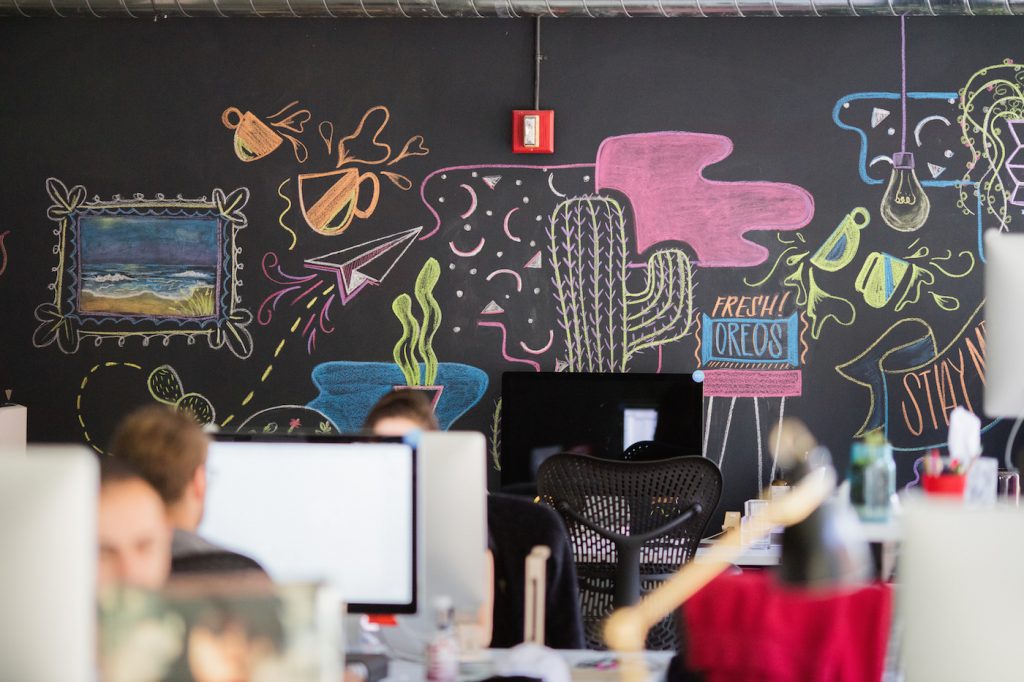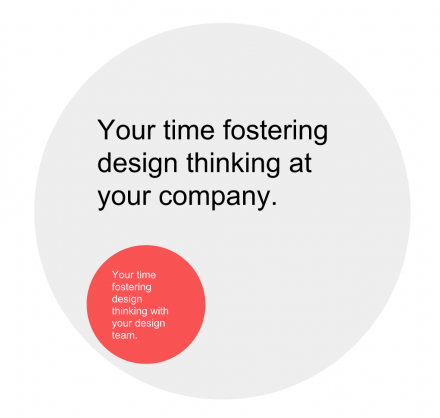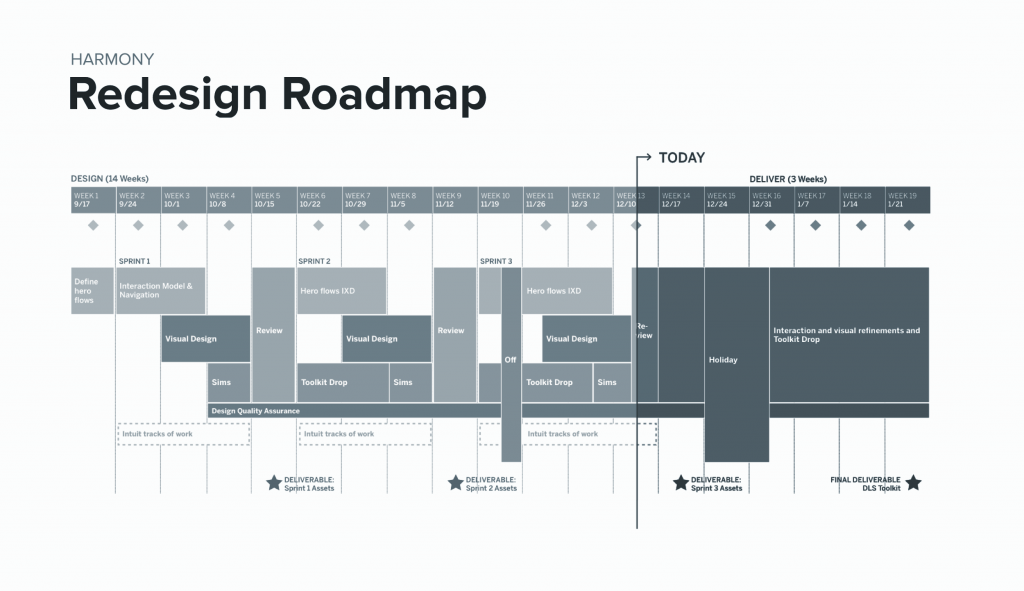How I Build Effective Design Teams
Amanda Linden is a Director of Product Design at Facebook. She was previously Head of Design at Asana and Design Director at Intuit. She first shared these ideas in February 2017 at Source, Designer Fund’s annual summit for design leaders.
As more tech companies prioritize design, leaders get both permission and pressure to hire effective design teams quickly. The way they go about it can make or break a culture that enables positive design outcomes. I often get questions like:
- What types of designers do you hire?
- How do you get CEO approval to build the team you want—especially a large one, or one with design specialists?
- How do you divide roles and responsibilities among designers and managers?
- How do you get teams like engineering and marketing on board with the design team’s vision and efforts?
With these in mind, I’ll share five tactics I’ve used to build effective design teams.

1. Design your ideal team, and get approval on your hiring plan.
Think about your dream team and note what types of designers and skillsets it would have. These are the types of designers I like to hire, each with different functions:
- Product designers: general product designers who partner with product managers one-to-one
- Comms/marketing designers: general marketing designers who are metrics-focused and have a strong understanding of brand
- Specialists: illustrators, motion graphics experts, UI engineers, researchers, writers, and brand designers who look across all products to make the entire user experience great
- Managers: for larger teams, managers who look after individual designers and create space for team productivity and collaboration
When I share this breakdown with other design leaders, I get reactions like, “Wow, illustrators and motion graphics experts. I don’t know if I’d get approval for that at my company. How did you get the green light?”
Here’s how. First, I ask my founders about the products and experiences they appreciate and admire. If they say Squarespace, Airbnb, and Pinterest, for example, I think of them as aspirational companies to model my team after. Then I go to those companies and ask how large their design organization is and what kinds of designers and skillsets it has. Next, I’ll ask the same questions at other companies that are the same size as ours to get data from peers as well.
Based on what I find, I put together an organizational plan for my own company that lays out the ideal headcount and skillsets. The benchmarks help founders put their expectations for design into context.
For example, at Asana we had about 25 people responsible for design. With a company size of 275, that was roughly a 1:10 ratio across the company. The team included:
- Product designers: 7
- Comms/marketing designers: 3
- Illustrators: 2
- Motion graphics artists: 1
- UI engineers: 1 dedicated to design
- Managers: 3
- Researchers: 4
- Writers: 3
Then it’s time to fill that headcount. Team culture comes from the people you hire, so when I bring on new designers, I look for three qualities (in addition to evaluating other standard criteria):
- Empathy – They exhibit empathy for customers, but also for their coworkers. This comes with a certain egolessness.
- Passion and scrappiness – They are dying to solve problems. They get scrappy and will find a solution no matter what.
- Diverse backgrounds – They can contribute to a diverse team that brings different ideas to the table.
2. Distribute responsibility
Once the right people are in place, make sure they’re working on the right things through a discussion of roles and responsibilities.
More and more companies are adopting the philosophy that the role of a manager is to ensure that the team is effective, not to approve designs. For example, a manager facilitates critiques and contributes as a peer, and designers know that they can take or leave managerial feedback. The role of a designer, then, is to create designs and decide which feedback to incorporate from their managers and colleagues. They are also responsible for reviewing the work of their peers.
A manager needs to adjust their role for individual contexts to support a truly effective design team. Early in my management career, I behaved in the same way throughout the design process, but I’ve learned that what my designers need from me changes drastically as they go through the design cycle.
Dynamic roles of a design manager
1. Discovery phase
In the discovery phase, I’m telling my direct report about an exciting new project. I want them to understand why the project matters and why they’re the right person. I feel their skepticism: “Why should I want to work on this?”
Manager role: salesperson
Employee state: skepticism
2. Defining phase
Once the designer is on board, I’m an active partner who’s helping them define goals and constraints. They’re pretty overwhelmed at this point; they’re not sure what success looks like yet, and they don’t have ideas.
Manager role: active partner
Employee state: overwhelm
3. Design phase
We hit a critical point where the designer gets clear on goals, gains confidence, and starts to generate ideas. This is when I get the heck out of the way. If I try to stay active as a partner, it can feel like obtrusive micromanagement. I do provide feedback as discussed earlier, and the designer decides what to incorporate.
Manager role: stepping back
Employee state: confidence
4. Development phase
Once a design has been created, it goes to developers. The manager should stay at arm’s length and be a thought partner for high-level questions. This also leaves room for developers to enter into the design process and add new ideas.
Manager role: thought partner
Employee state: handing off
5. Deployment phase (at the end of the project)
When the project has been deployed, the manager’s role is to recognize the employee for their accomplishments. I find that the more talented designers are, the more likely they are to be unsatisfied with what they’ve launched. They see the two things that are wrong instead of the ten things that are right. Help them balance their healthy self-criticism with self-recognition. Look at the finished product— the before and after—and help them see why their outcome is better.
Manager role: recognizer
Employee state: self-critical
Adjusting my management style to different situations is an important part of my contribution to design team culture.
My teams also use areas of responsibility to account for all the different tasks and jobs required to make a design team run smoothly. We look across the company, rake up every responsibility related to design, and split these areas of work among designers and managers. We’re thoughtful about assigning the right responsibilities to the right talent, and we really give them ownership over their area of responsibility. Here are some common areas of responsibility:
Marketing design: website, guides, blog, email design, ad design, swag, video, social media, in-product marketing, etc.
Patterns: product style guide, marketing style guide, external design resources, photography, iconography, illustrations, etc.
Organizational tasks: brand, consistency, onboarding, tools, critique, prototyping, etc.
Recruiting: interview process, Designer Fund Bridge program liaison, online hiring presence, thought leadership, etc.
There should be a documented owner for each area of responsibility so that the team is clear on who is responsible for what. This ensures that all important tasks are at least acknowledged and accounted for, and that you are giving as much autonomy to the team as possible.
3. Create a well-defined brand
A well-defined brand is your team’s north star. It helps you work as a unit, and each individual can see how their efforts lead to an experience that looks like it’s been designed by one person.
Hold ideation sessions for your team and others in the company to contribute to your brand vision, then refine it and codify it. Define these three components:
- Brand narrative: the core emotion that you want to convey, the highest-level story
- Brand attributes: the words you want people to use when they describe your products
- Brand motif: the visual style of your products that cause people to describe you with those words
For example, Asana’s brand was defined like this:
- Brand narrative: The core story is “Do great things together.” We wanted people to get a feeling of “teamwork” when they use Asana.
- Brand attributes: We wanted people to describe our products as “empowering, purposeful, approachable, and quirky.”
- Brand motif: Asana’s brand motif is “Clarity and energy.” This is the visual style of our brand. We wanted the product experience to feature a clean, white canvas for an undistracted view of your work, mixed with bursts of energy and color that celebrate and reinforce your progress when you’re doing the right things in the product.
Documenting and socializing your brand gives teams clarity on the personality of your product and helps them make choices about what works and doesn’t work for your brand.

4. Make sure your engineers sweat the details
I’ve seen a lot of situations where designers feel disempowered: after they make wonderfully beautiful designs, the actual implementation in the product is off. This can really damage design culture.
At both Intuit and Asana, the solution that worked best was to hire dedicated UI engineers who spent their time as a liaison between design and engineering. They implemented many design-related changes, and strengthened the relationship between the two teams.
For example, a designer might feel really passionate about something that their PM wouldn’t prioritize, like an updated color palette or sidebar contrast. The designer can just go to the UI engineer to get it done without bothering the PM. This gives designers a huge sense of empowerment and accountability for execution quality.
Some responsibilities of the design UI engineer include:
- Creating the design toolkit
- Working through a backlog of design bugs that won’t get prioritized by the product team
- Communicating the importance of design to engineering and product teams, doing rotations on product teams, and preaching the gospel about components and pixel perfection
5. Enable design thinking across the company
As a design leader, I spend much more of my time fostering design thinking outside of the design team than I do within my own team. Designers already get it.
But you can teach other people in the company how to work with the design team and how to think like designers.

Include non-designers in the design process
One way I like to do this is to host cross-functional ideation sessions or design sprints. For example, as you’re defining your brand, include other teams that can contribute to who you are and how you want to present yourself.
Visualize decision points and timelines
It’s also helpful to have a really clear roadmap for your design process when taking a product from idea to ship. This should clearly show external stakeholders when they can provide feedback; moments when you let people into the design world, and others when you push them away to give designers a break from chaotic feedback loops.
Below is an example of a project plan that the design team used at Intuit when redesigning QuickBooks. This let people know when interim decisions were being made along the way and when a decision was closed for discussion so that we could move forward and meet our overall deadline.

Taken all together, leaders of successful design teams need to make adjustments to old-school management models. They need to dynamically shift their role throughout the design process, be purposeful about hiring and the division of responsibilities, and wield authority carefully to build a culture that supports great design. At the end of the day, design leaders are protectors and facilitators who create the conditions for designers to do their best work.